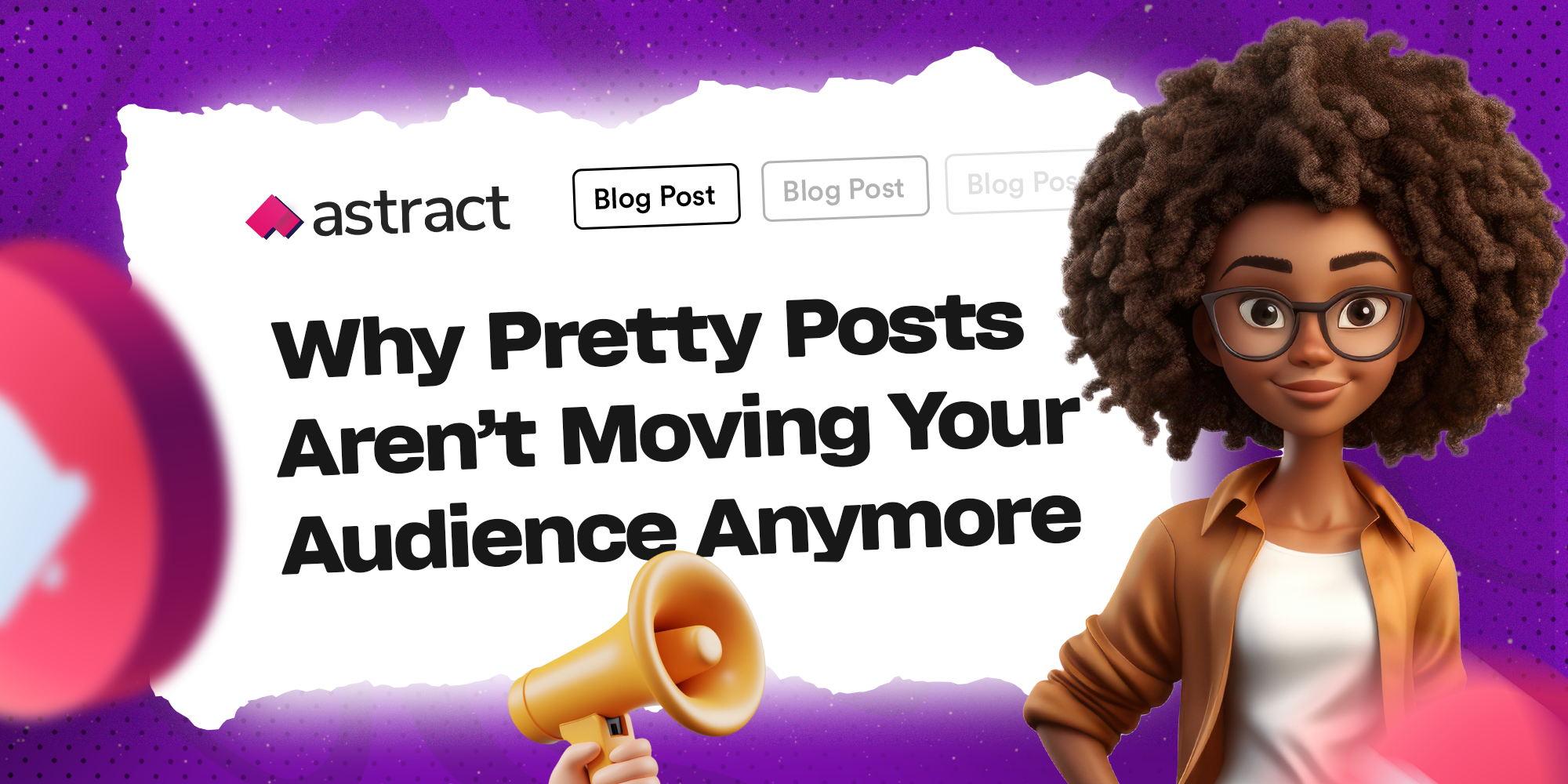Imagine walking into a space where the lighting is great, the layout makes sense, and you know exactly where to go. That’s what a great homepage does. It greets and guides and reassures. And most importantly, it works.
But what does working mean, exactly?
For business owners and brand builders who don’t code and frankly don’t want to, your homepage doesn’t need to be complicated. It needs to convert. So, how do you know if your homepage is working for you or quietly turning people away?
That’s what this checklist is for.

What Does “Working” Mean Anyway?
The homepage is the most visible page on the website, so it’s essential to make a good first impression. It’s tempting to think a homepage is “working” if it’s pretty. And yes, aesthetics matter (we love good fonts and gorgeous layout too). But a truly effective homepage does more than look good. It guides, answers, invites, and converts.
Here’s what a working homepage actually does:
- Tells people what you do within seconds
- Makes it obvious who you help and how
- Builds enough trust to keep people from bouncing
- Nudges people to take a clear next step
If it’s not doing these things, it may be costing you clients.
The Homepage Checklist
With the help of our branding and web design experts, we have created a comprehensive checklist for your website’s homepage. In this guide, we’ll break down the key elements of a high-performing homepage and explain how to execute each one.
1. A Logo
Your logo is your brand’s identity at a glance. It should be clean and placed prominently, typically in the top-left corner. Users subconsciously seek it out as a way to orient themselves. Ensure it’s clickable and always leads back to your homepage. Consistency in logo usage across all digital platforms is also key to building familiarity and trust.
2. A Headline
Your homepage headline should tell people what you do and why it matters to them, in under 10 words and 5 seconds. The headline is one of the most important content on your website so avoid buzzwords. A great headline answers: “What problem do you solve, and who do you solve it for?” Pair this with a supporting subheadline that adds detail and reinforces your unique selling proposition.

3. An Introduction
Beneath the headline, use a short paragraph or bold statement to build a connection. This section should introduce your value proposition and set expectations for how your product or services solve pain points. Use plain language, and if applicable, include a sentence or two about your mission or backstory.
4. A Call-to-Action
We can’t overemphasise the importance of a call to action on your website. Your homepage, especially, needs strong calls to action that guide users to the next step in their journey. It could be “Book a Demo,” “Browse Services,” or “Download the Guide.” The key is clarity and placement. Make it stand out with color contrast and ensure it appears above the fold.
5. A Navigation Menu
Don’t make people guess. A clear navigation menu is non-negotiable if you want to improve your conversation rate. Stick to 5–7 primary menu items that give visitors a clear idea of the other pages on your website. Another best practice for navigation design is to use familiar labels and include a sticky nav bar if your site has long scrolling. Also, drop-downs should be minimal and well-organized.
6. A Search Bar
If your site has a lot of content—especially for e-commerce, blogs, or SaaS—add a search button. Users with specific intentions want fast answers. A search bar increases usability and reduces frustration. Make it easy to spot, and ensure it works well on mobile devices.

7. A Homepage Video
A short homepage video (60–90 seconds) can dramatically boost engagement and conversions. Use it to show your product in action, feature your team, or explain your process. People connect more easily with visual storytelling so keep it high quality, include captions, and ensure fast loading.
8. FAQs
Your homepage isn’t the place for a full knowledge base, but a short FAQ section can go a long way. Address the top questions new visitors might have, such as: pricing, how it works, your target audience, or what sets you apart. This section helps ease doubts and move users closer to conversion.
9. Keywords
Add relevant keywords naturally across your homepage to improve SEO. Your headline, subheadline, and intro text should reflect what people are searching for. Use tools like Google Keyword Planner or Ubersuggest to identify terms aligned with your audience’s intent. But remember: write for humans first, algorithms second.
10. Human Faces
People connect with people. Add photographs of your team, customers, or real users, not stock models. Human faces, especially when they are smiling or expressive, help build trust and make your brand feel more relatable. This is particularly useful in sections that talk about your “Why,” your process, team, or customer testimonials.
11. Trust Signals and Success Indicators
What convinces someone to trust you? Testimonials, client logos, media features, case studies, certifications, and ratings all do the trick. Showcase these elements in a section labeled “Trusted by” or “Results that Speak.” Add photos and names to testimonials to give your business more credibility. Let your visitors know if you have been named the restaurant of the year or recognised by famous individuals or organisations.
12. Chatbot or Live Chat for Instant Support
Adding a chatbot can significantly enhance the user experience. Visitors may have quick questions and don’t want to dig through pages to find answers. Use a simple chatbot that helps with FAQs, offers resource links, or captures leads when your team is offline.

13. Content Offers and Lead Magnets
Not everyone is ready to buy. For information-seeking users, offer something valuable like free guides, blog posts, webinars, quizzes, or templates. Position this mid-page or right before the footer. This helps you keep lukewarm visitors on your website for longer and you can also ask for email addresses to build your email list.
14. A Final Call to Action
The bottom of your homepage is your last chance to convert. End with a strong CTA that mirrors your top CTA or offers an alternative path (e.g., “Join Our Newsletter” or “View Portfolio”). Keep the copy action-oriented to push your visitors to find new ways to engage with your website, the main goal of a homepage is to lead people to this point where they are motivated to take an action.
Read our guide on what makes an effective call-to-action.
15. A Footer
Your footer is like the basement of your homepage; it should be tidy and useful. Include links to your About page, contact information, social icons, terms and privacy policy, and possibly a newsletter signup. Don’t forget to include copyright information and a small version of your logo. This section should offer a sense of completion.
16. Visual Breathing Room (a.k.a. White Space)
Cramming too many elements together creates cognitive overload. Use margins and intentional breaks between sections to improve the conversion rate of your homepage. Great design is not just about what you add but also what you leave out so give your content room to breathe.

7 Questions to Ask About Your Homepage Right Now
Let’s get practical. Pull up your homepage in another tab. Then ask yourself these seven questions:
1. Can someone understand what you do in 5 seconds or less?
This is the golden rule of homepage design. If a visitor has to scroll or squint to figure out who you are or what you offer, they’ll bounce. People are busy and online, they’re even busier. Make your headline count.
Example:
Helping women-led brands.
That’s clear. That’s specific.
2. Is there a clear visual hierarchy?
Think of your homepage like a room. The eye should be gently led from the doorway to the key areas, your offer, your CTA, your credibility.
Use:
- Large, punchy headlines
- Short, scannable paragraphs
- Clear buttons (not links buried in text)
- Enough breathing room (a.k.a. white space)
Visual hierarchy is about guiding attention. And attention, online, is gold.
3. Do you have one strong call to action?
“Book a call”? “Browse products”? “Download the guide”? Choose one main CTA and make it the hero. A common mistake? Offering too many choices. If your homepage has three different CTAs above the fold, you’re likely confusing people.
Pro tip: Use verbs. Not just “Learn More” but “Start Your Free Trial” or “See How We Work.”
4. Are you showing trust signals?
People don’t commit without trust. So show them why they can trust you. This could be:
- Client logos or media mentions
- Testimonials or reviews
- Awards or credentials
- Real photos of you or your team
Think of these as social proof sprinkles. Not the whole cake, but crucial to the flavor.
5. Does your homepage feel like your brand?
This is where emotion comes in. Words and visuals should feel like you. If you’re a luxury fashion brand, your site shouldn’t feel like a tech startup. If you’re a therapist, your tone should feel warm, not corporate.
Ask yourself:
- Are the images aligned with how I want to make people feel?
- Does the copy sound human or a robot?
- Would a first-time visitor “get” our vibe right away?
Emotion is the shortcut to connection. And in business, connection converts.
6. Is it mobile-friendly?
Over 70% of users are viewing your site on their phones. If your site:
- Has text that’s too small,
- Buttons too close together,
- Or layout that breaks on mobile…
…you’re losing people.
Use Google’s Mobile-Friendly Test to find out fast.
7. Does it load within 3 seconds?
Speed matters. A slow homepage = lost traffic. According to research, 40% of users abandon a site that takes more than 3 seconds to load. Use PageSpeed Insights to test your site. Then talk to your developer (or us!) about optimization options.
What Non-Techies Often Overlook
If you’re not a web designer, it’s easy to miss the tiny things that make a huge difference. Here are some of the most common missteps we see:
- Too much text. You don’t need to explain everything up front. That’s what the rest of your site is for. Your homepage should tease, not teach.
- Vague CTAs. “Click here” isn’t inspiring. Neither is “Contact us.” Get specific about what people are getting.
- Jargon-heavy copy. Write like you speak. If you wouldn’t say “end-to-end scalable solutions” in a sentence, don’t write it either.
- No clear journey. Every homepage tells a story. Even if it’s just: Problem → Possibility → Proof → Next Step.
How to Audit Your Homepage (Today)
Feeling inspired to make some changes? Here’s how to do a mini-audit, even if you’re not tech-savvy.
Step 1: Do the 5-second test
Ask a friend (who’s never seen your site) to look at your homepage for 5 seconds. Then ask:
- What do you think this business does?
If they can’t answer, your homepage probably needs to get clearer.
Step 2: Check it on your phone
Open your site on your mobile device. Try clicking your CTA. Is anything hard to read, use, or find?
Step 3: Test speed
Use Google PageSpeed Insights. If you’re scoring below 80 on mobile, it’s time to optimize.
Final Thoughts
Your homepage is a strategic tool, not just a digital brochure. It should communicate your value and build enough trust to push users toward the next click. By integrating the elements above, not only will you improve user experience, you’ll also set your brand up for conversions.
Ready to Make Your Homepage Work Harder?
At Astract, we design websites that don’t just look good. They feel good.
✨ Want a free homepage review? Drop us a message.
✨ Or download our Homepage Self-Audit Worksheet.








